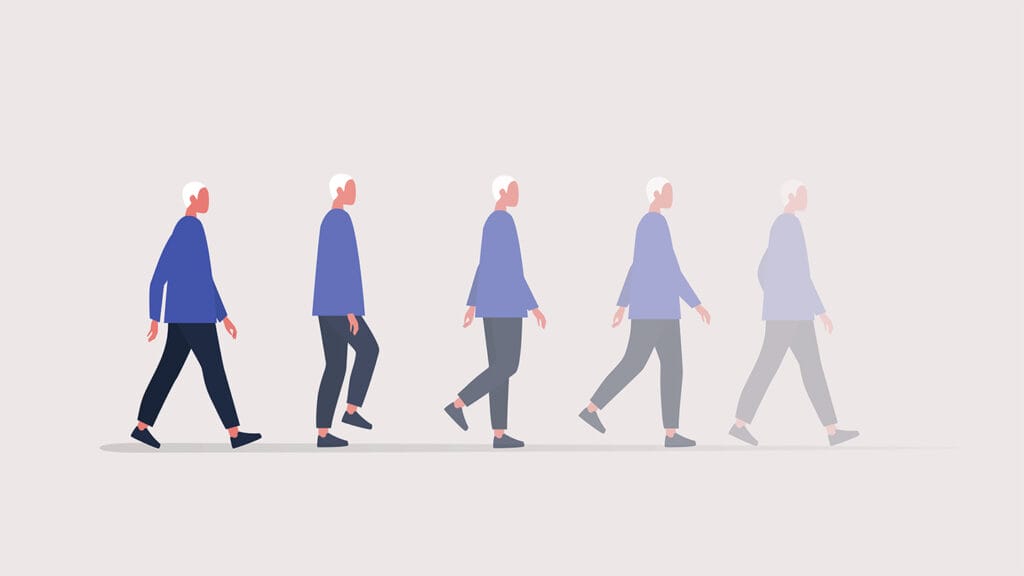
Members of the relatively neglected “forgotten middle” group of near-retirees are worse off in health and finances than their counterparts from more than two decades ago and are going to need stronger support as they age, according to the authors of a new study.
Research from USC Schaeffer Center for Health Policy & Economics and the Columbia University Mailman School of Public Health published last month in Health Affairs found significant outcome disparities after analyzing the health and economic well-being of five cohorts of Americans in their mid-50s between 1994 and 2018. The Urban Institute presented a panel discussion of experts Thursday to discuss the study’s findings and identify potential policy solutions to curb negative trends related to middle-income Americans.
Using data from the Future Elderly Model, based on the Health and Retirement Study, the researchers projected mortality, quality-adjusted life years, health expenditures, and income and benefits, focusing on the lower-middle and upper-middle class. They found that the issues that lower-middle income Americans in their mid-50s are facing today include increasing healthcare costs and decreasing annual resources, home ownership and quality-adjusted life expectancy.
“A long and healthy life is increasingly available to some of us — those of us who can afford it,” Urban Institute President Sarah Rosen Wartell said in opening remarks. “This pattern is no longer limited to those with the lowest incomes.”
Although the upper-middle class saw life expectancy increase 5% — or almost two years — and wealth improved over the study period, lower-middle class Americans nearing retirement saw life expectancy and finances stagnate or decrease. Similar patterns emerged for each group’s number of future life years without disability.
The researchers found that the health status at age 50 for both groups had worsened over the past two decades, but the lower-middle income group saw their health deteriorate faster, with increased incidences of hypertension, diabetes and heart disease.
“Our findings suggest that today’s lower-middle class will spend a larger proportion of their older life with poor health,” Jack Chapel, study lead author and a PhD candidate in economics at the USC Dornsife College of Letters, Arts and Science, said during a presentation of the study findings prior to the panel discussion.
The combined value of financial and housing wealth, and the value of income, health expenditures and quality-adjusted life years after age 60, grew 13% for the upper-middle group during the study period, whereas members of the lower-middle group in 2018 were left scarcely better off (3% growth) than their peers two decades earlier.
Jung Hyun Choi, a senior research associate at the Urban Institute, said that home ownership is a critical source of wealth-building. But as home prices doubled over the past 10 years and inflation increased 30%, home ownership became increasingly unaffordable, particularly for members of the lower middle-income group. She added her research found that individuals who bought homes before the age of 35 had significantly higher housing wealth at age 60.
Panel member John Rowe, MD, of the Mailman School of Public Health at Columbia University said he found the study’s findings “striking” and said he increasingly is concerned about this next generation that is about to enter late life.
“The general policy network thinks we’ll take care of the poor and everybody else is OK,” Rowe said. “That’s now what we see here.”
A need for stronger supports
The study authors noted that policymakers continue to focus on assistance for the most disadvantaged Americans while neglecting those in the “forgotten middle” who don’t qualify for public support yet lack adequate personal resources to cover the increasing costs of healthcare and housing.
“Our study projects lower-middle Americans will spend a longer proportion of remaining life with significant healthcare needs, but with no more economic resources to attend to those needs than similar cohorts had 20 yeast earlier,” Dana Goldman, co-director of the USC Schaeffer Center, said in a statement.
Sharing data from the Centers for Disease Control and Prevention’s Behavioral Risk Factor Surveillance System Data, Stanford University Associate Professor David Rehkopf, MPH, ScD, said that if the trends persist, then the current population of 50-to-59-year-olds will be entering retirement with substantially worse health and morbidity than previous generations.
Wendell Primus, PhD, a visiting fellow in the Center on Health Policy at the Brookings Institution, said that several actions can be taken on the policy front to increase the financial security of low- to middle-income Americans, including addressing issues surrounding Social Security, increasing earned income tax credits among singles and childless couples, and expanding Medicaid.
“The near-elderly and the lower-income groups are skating to a place that is a much worse place to be than the current elderly population started,” Rowe said. “The data we’ve seen today suggests 60 is the new 70. We’ve got to reverse-engineer our ideas we’re having about this longevity dividend and start thinking about how we’re going to prevent things from getting worse.”

